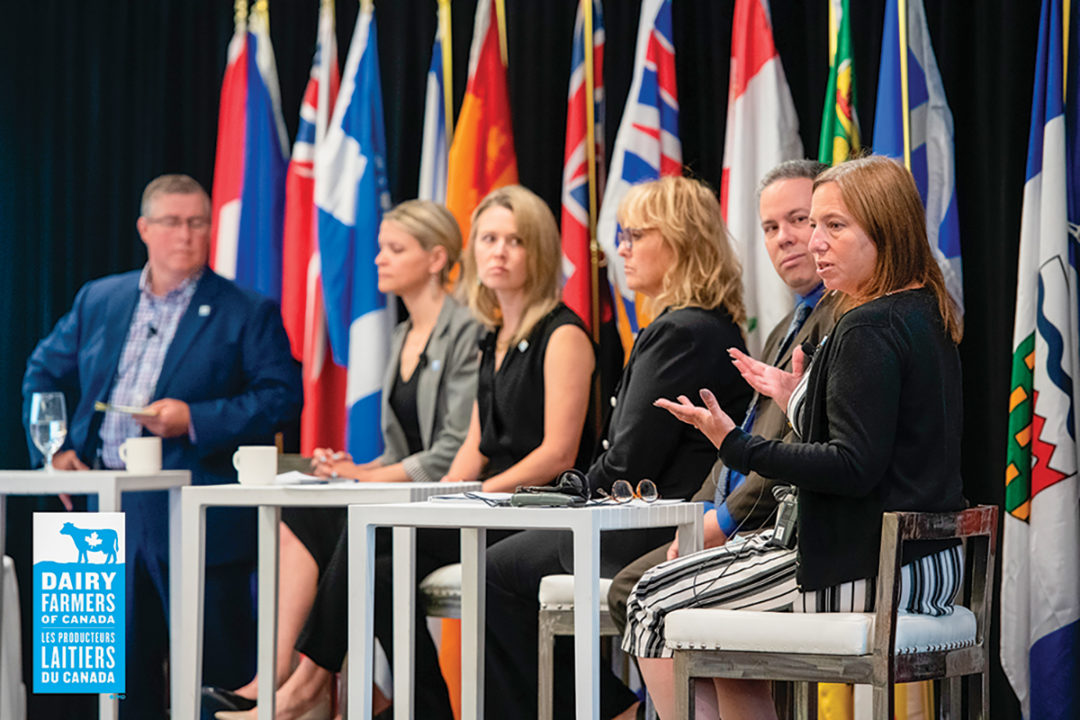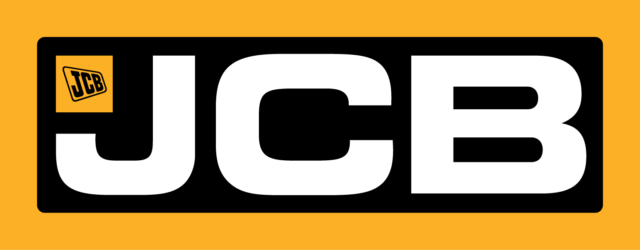On July 13-14, Dairy Farmers of Canada (DFC) held its first hybrid annual general meeting (AGM) with voting delegates representing DFC’s member organizations attending in person at the Westin Ottawa and hundreds of farmers participating virtually from home.
The event featured engaging and timely sessions, including fireside chats with DFC’s executive team, as well as Kirsten Hillman, Canada’s ambassador to the U.S., and political journalist and commentator Althia Raj of the Toronto Star. An interactive session with dairy farmers closed out the two-day event, with top-of-mind issues raised such as milk pricing, sustainability initiatives and changing consumer demographics.
While not all sessions were open to the public, we are pleased to recap some of the sessions that were.
Dairy farming forward to Net Zero 2050
A panel of leaders working on DFC’s plan to achieve net zero emissions by 2050 came together to review steps taken so far and to explain the next steps for farmers. The overarching message from all four panelists is that much has been accomplished since the Net Zero 2050 announcement at DFC’s annual policy conference in February, and that to succeed, the plan and the commitment must come from producers and encompass the three pillars of sustainability – environmental, community and economic. No plan to reach net zero will be successful without further progress in all three.
Annie AcMoody, DFC’s vice president of policy and trade, explained why a sustainability strategy is so important – primarily because consumers, government, supply chain partners and dairy farmers all expect the industry to be proactive. “There is increasing support from government and research initiatives,” AcMoody said. “Impacts from climate change are felt first by producers; there is an opportunity here to be part of the solution.”
Rebecca Johnson, meanwhile, is a sustainability specialist with Viresco Solutions, a consultancy firm specializing in low-carbon and sustainable agriculture that is working closely with DFC on our net zero strategy. She explained the process they have followed to date: The committee has gone through three stages to arrive at the implementation stage, including discovery, evaluation and planning. One of the outcomes is a review to evaluate existing tools to find the one that can best be adapted to fit the needs of Canadian dairy farmers. They are also considering various strategies for implementation of the plan: a pilot program approach and a sector-wide launch. Both have merits and will serve different purposes when it is time to roll out the plan to the industry.
Korb Whale, an Ontario dairy farmer and director on both DFC and Lactanet boards, said the key to success is that the plan must be driven by farmers. “We have 45 dairy producers on the sustainability advisory group from across the country working to make sure this is accessible to everyone who wants to,” Whale said. Partnerships within and outside of the supply chain will also be critical to success.
DFC’s Chief Sustainability Officer Fawn Jackson shared a sneak peek into the newly developed Implementation Guide. The tool will allow farmers to quickly assess opportunities and the impact changes could have on not only sustainability but also for the overall operation and provide more detailed information on each practice. The 38 practices are broken into eight categories which are evaluated based on criteria such as cost and ease to implement, effectiveness and average GHG reductions.
Dairy market outlook
Sébastien Pouliot, principal economist for Farm Credit Canada, noted that consumers and dairy farmers alike are concerned with the impact of inflation on the economy, as he shared highlights of a report titled “Economic outlook: Will inflation ever slow down?”
While Pouliot expects economic growth to keep rebounding after the pandemic-driven dip, inflation may not return to normal until 2024. The most recent data released in June 2022 indicates strong growth continuing until the end of the year, slowing in 2023 and leveling out in 2024, when inflation should return to a target of 2% or 3%.
Inflation has already taken a toll on many farm essentials: For instance, Pouliot noted that energy costs rose 34.8% between May 2021 and May 2022. The Canadian Dairy Commission’s planned September advance increases on the farmgate milk price is designed to partially offset increased productions costs, giving farmers a better opportunity to earn a fair return on labour and investment.
Capital costs related to dairy farming from interest rates have risen, though Pouliot forecasts more stability. The Bank of Canada rose the overnight interest rate the day before the AGM to help fight inflation, and Pouliot says we can expect similar increases in the short term. He noted that interest rate hikes will especially affect farmers who have a high debt-to-equity ratio.
Much evidence suggests the prices of plant-based competition could be more volatile in the long term; Pouliot looked at the most recent data comparing the average retail prices of butter (+15.6%) to margarine (+32.3%). The data showed how the price of milk has remained relatively stable, in great part because of supply management, and fresh milk is a percent point below the general inflationary raise of all food (+7.8% versus +8.8%).
Dairy Farmers of Canada (DFC) is the national policy, lobbying and promotional organization representing Canadian dairy producers. DFC strives to create stable conditions for the dairy sector in our country. It also seeks to maintain policies that promote the sustainability of Canadian dairy production and promote dairy products and their health benefits. Visit Dairy Farmers of Canada for more information.








